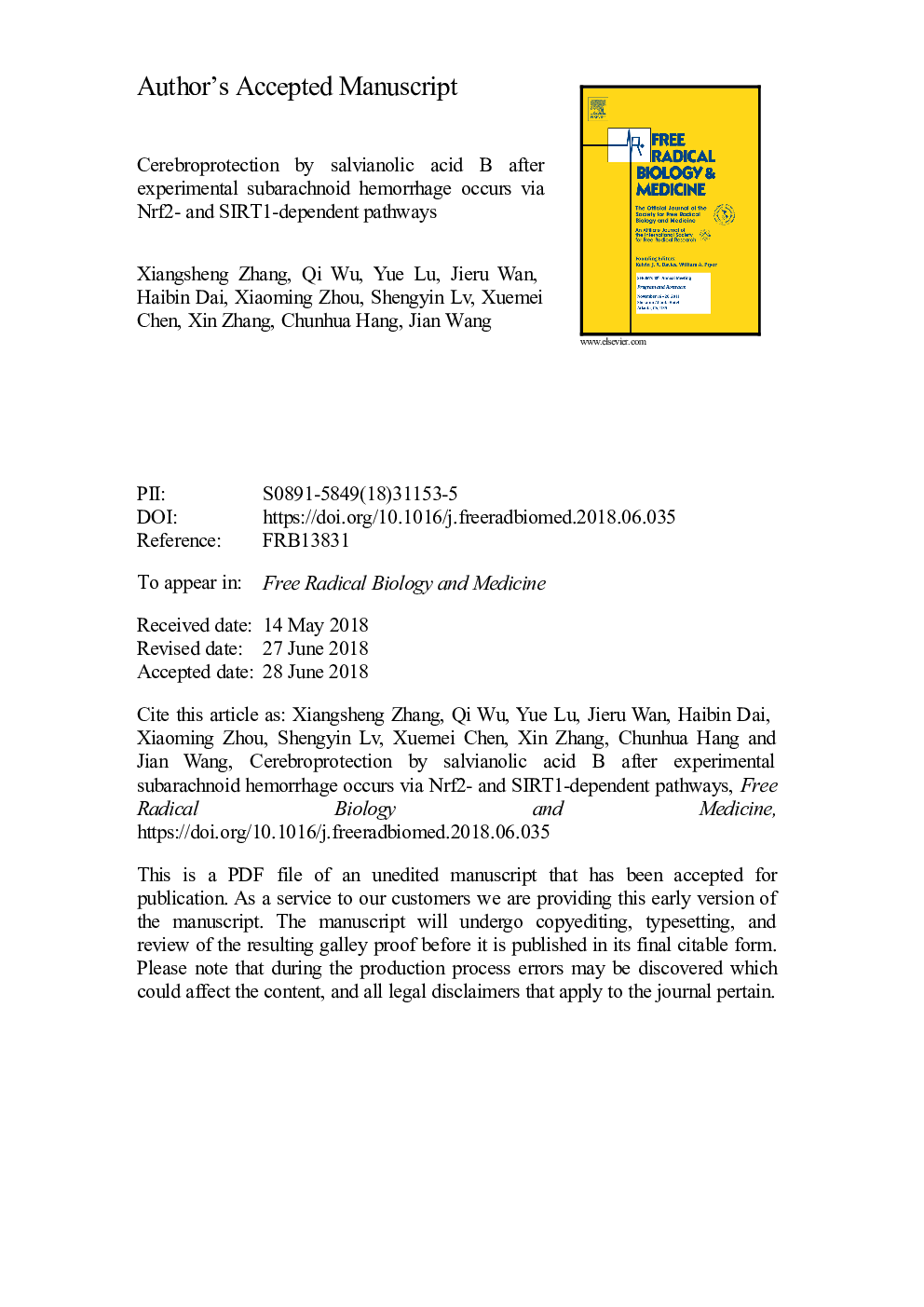| کد مقاله | کد نشریه | سال انتشار | مقاله انگلیسی | نسخه تمام متن |
|---|---|---|---|---|
| 8265274 | 1534918 | 2018 | 46 صفحه PDF | دانلود رایگان |
عنوان انگلیسی مقاله ISI
Cerebroprotection by salvianolic acid B after experimental subarachnoid hemorrhage occurs via Nrf2- and SIRT1-dependent pathways
دانلود مقاله + سفارش ترجمه
دانلود مقاله ISI انگلیسی
رایگان برای ایرانیان
کلمات کلیدی
HO-1MDANQO-1EBI8-OHdGDCFH-DAAMPKGSHDMSO - DMSOGSH-Px - GSH-PXEarly brain injury - آسیب مغزی زودرسDimethylsulfoxide - دیمتیل سولفواکسیدantioxidant response element - عنصر پاسخ آنتی اکسیدانlactate dehydrogenase - لاکتات دهیدروژناز LDH - لاکتات دهیدروژناز به صورت مختصر شده LDH malondialdehyde - مالون دی آلدهیدARE - هستند8-hydroxyguanosine - هیدروکسی گوانوزین 8adenosine monophosphate-activated protein kinase - پروتئین کیناز فعال شده با آدنوزین مونوفسفاتGlutathione - گلوتاتیونglutathione peroxidase - گلوتاتیون پراکسیداز
موضوعات مرتبط
علوم زیستی و بیوفناوری
بیوشیمی، ژنتیک و زیست شناسی مولکولی
سالمندی
پیش نمایش صفحه اول مقاله

چکیده انگلیسی
Schematic illustrating the possible mechanisms of salvianolic acid B (SalB) action after subarachnoid hemorrhage (SAH). As illustrated, SAH markedly increases reactive oxygen species (ROS) generation in the extracellular space. After stimulation, nuclear factor-erythroid 2-related factor 2 (Nrf2) dissociates from Keap1 and translocates into the nucleus, subsequently inducing the expression of antioxidant enzymes, including heme oxygenase-1 (HO-1), NADPH: quinine oxidoreductase-1 (NQO-1), and superoxide dismutase (SOD), which are critical for maintaining cellular redox homeostasis against oxidative insults. In addition, in response to ROS accumulation after SAH, sirtuin 1 (SIRT1) activation inhibits FoxO1 and P53 acetylation and increases Nrf2 expression to reduce brain damage after SAH. SalB treatment induces the expression of SIRT1 and Nrf2, which in turn modulate downstream antioxidant enzyme expression, thereby ameliorating brain damage after SAH. In contrast, SIRT1-specific inhibitor sirtinol reverses the protective effects against SAH by inhibiting SIRT1 as well as Nrf2 activation, eventually aggravating SAH-induced brain damage.240
ناشر
Database: Elsevier - ScienceDirect (ساینس دایرکت)
Journal: Free Radical Biology and Medicine - Volume 124, 20 August 2018, Pages 504-516
Journal: Free Radical Biology and Medicine - Volume 124, 20 August 2018, Pages 504-516
نویسندگان
Xiangsheng Zhang, Qi Wu, Yue Lu, Jieru Wan, Haibin Dai, Xiaoming Zhou, Shengyin Lv, Xuemei Chen, Xin Zhang, Chunhua Hang, Jian Wang,